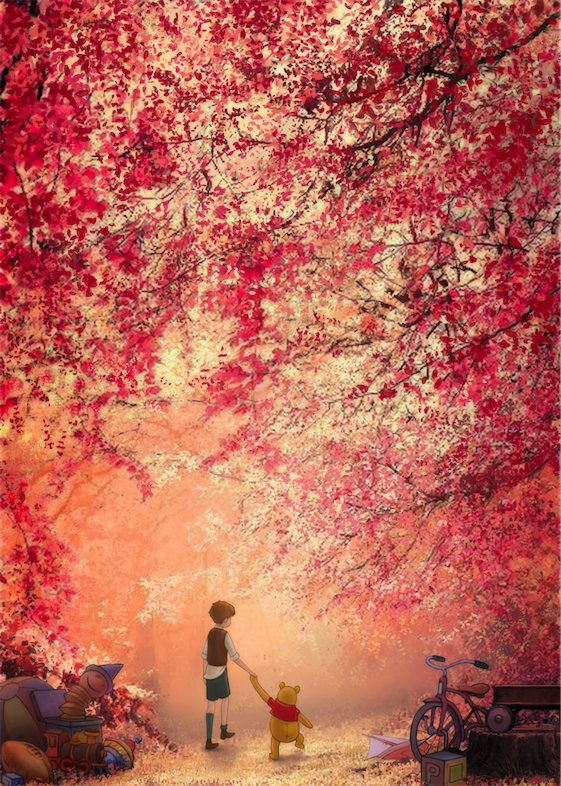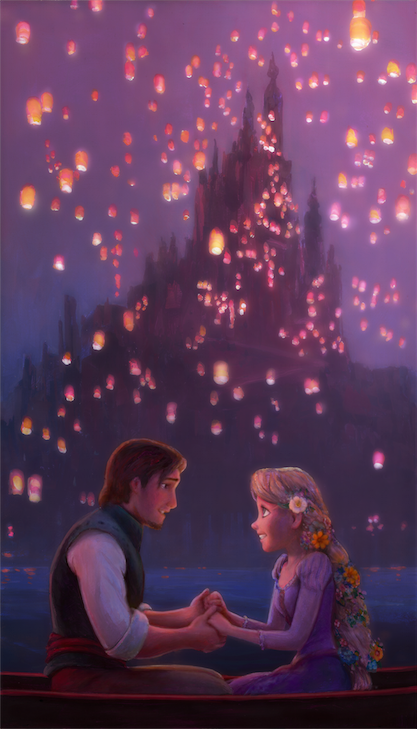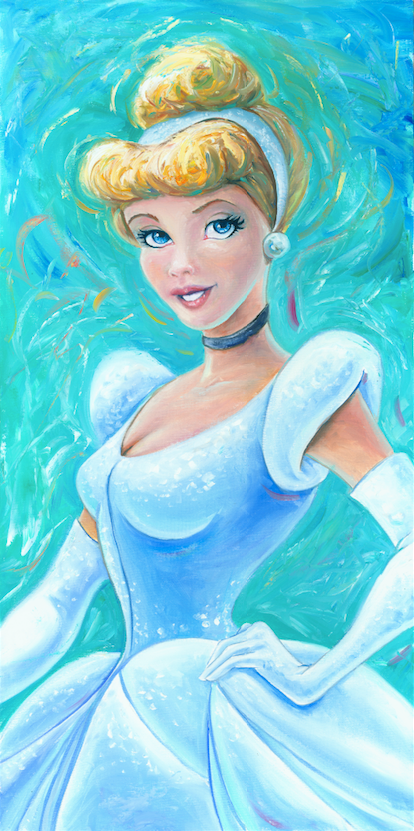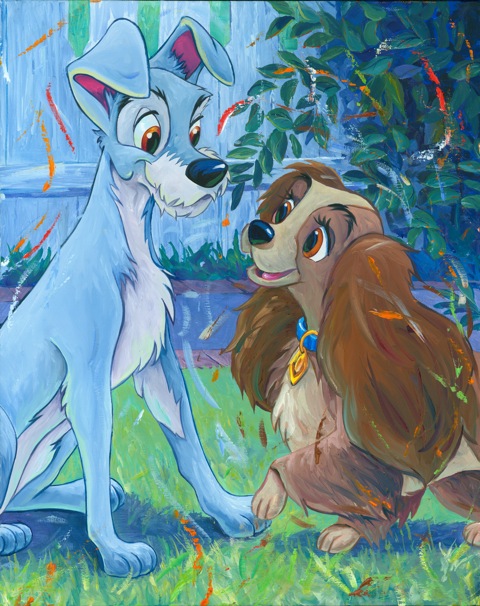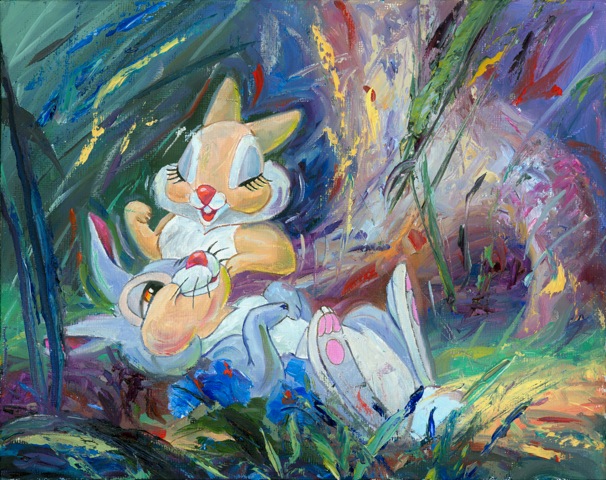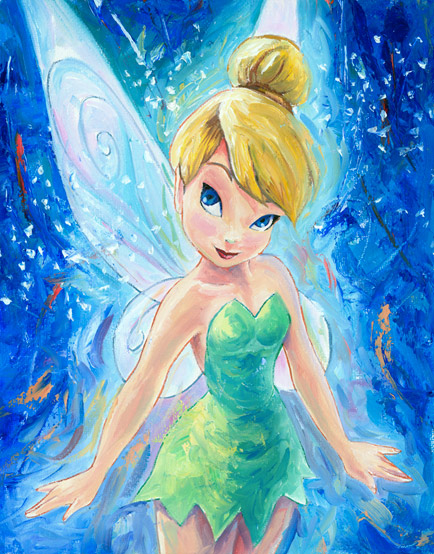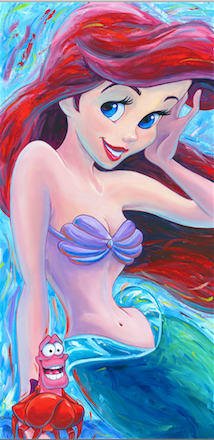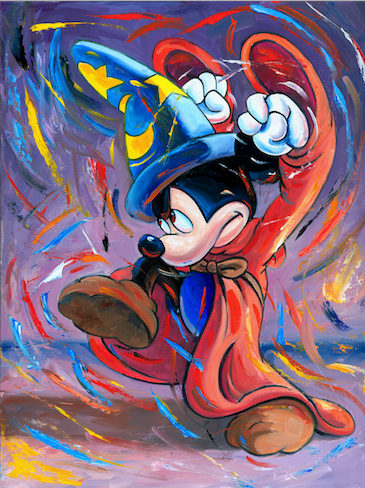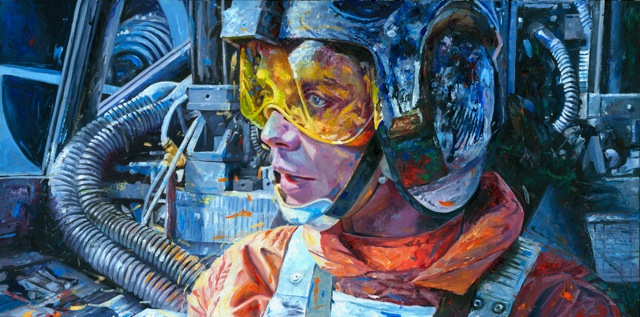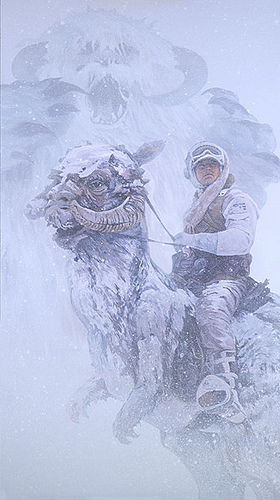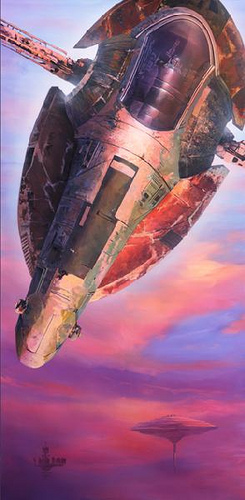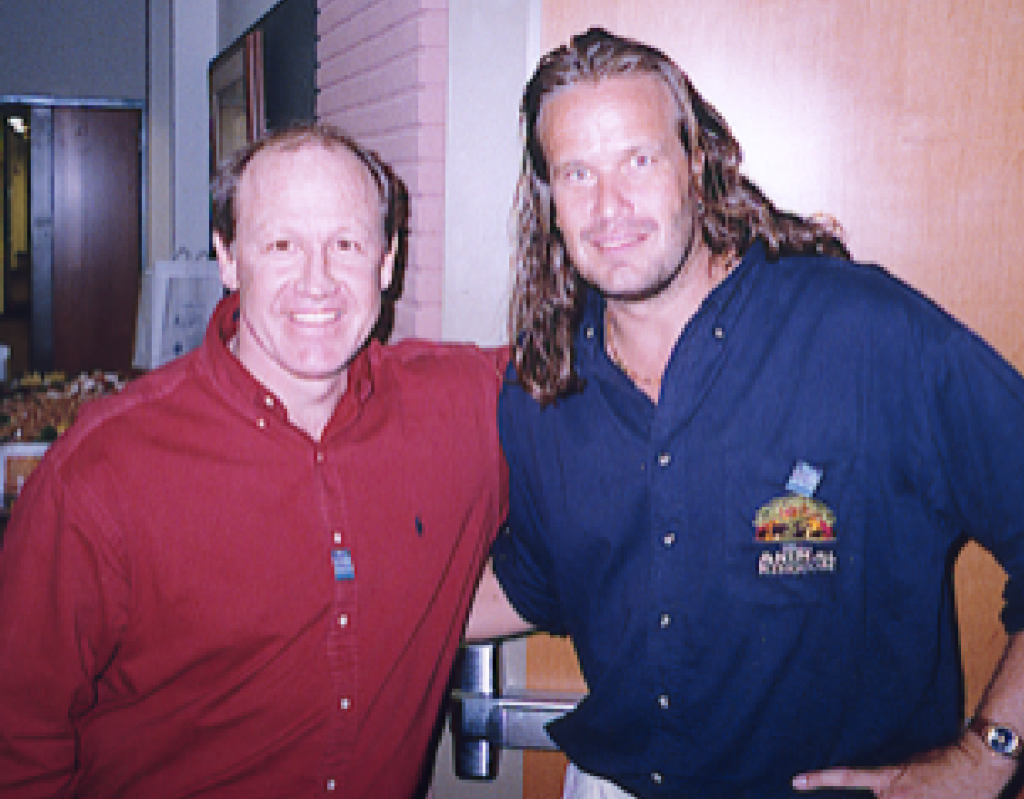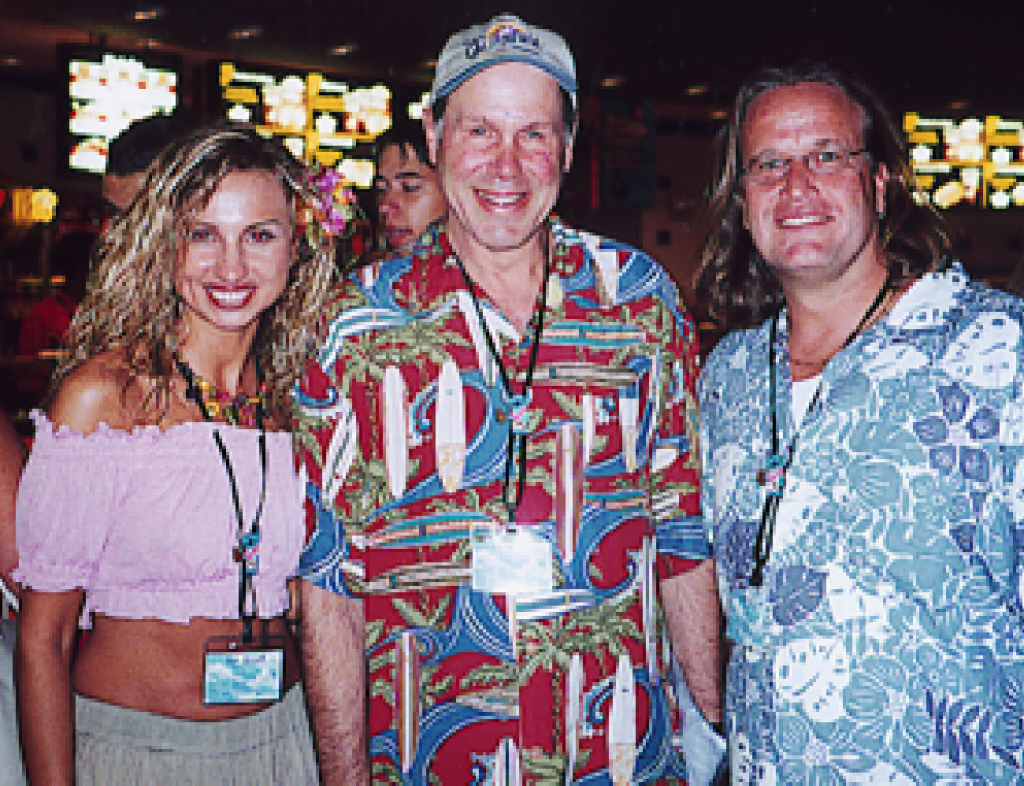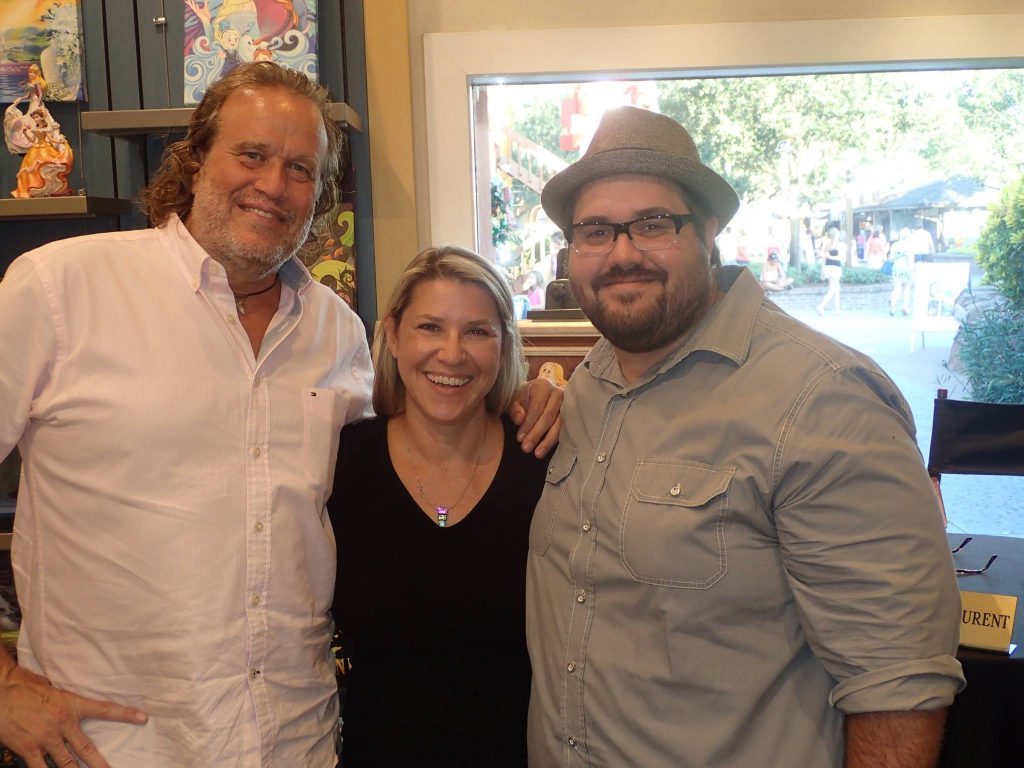Disney and Star Wars concept artist William Silvers, ‘Bill’ to his friends, has the sort of Olympic level of chill a traffic controller would envy. He looks like a surfer that just stepped out of a particularly bitchin’ wave. The only time he doesn’t have a mellow smile on his face is when he’s concentrating on his painting, and even then, one sneaks out from time to time…and why wouldn’t he smile? He’s living the life most artists only dream of, and he knows it. What’s more, he appreciates it.

Bill was born in a small town in Ohio to hardworking parents. He remembers from his very first memories being inspired by his dad, who was also an artist, but tucked away his aspirations to work at a factory to keep his family in food and shelter. His dad supported Bill’s love of drawing, and applauded him when, even as a young child, he copied cartoons from the paper. Explains Bill, “My happy place was drawing for hours and creating different characters. This was my escape from the reality. Even as a child I already knew I was going to leave the small town.” It wasn’t an automatic he would go to college or study art past high school, though. With six kids in a household struggling to make ends meet, financial resources were limited. Thank goddess for his teachers, who believed in him and pushed him his senior year to do whatever it took to pursue his art after graduation.
Once again inspired by his dad’s work ethic, Bill took factory jobs and worked in restaurants while keeping up his studies, all to raise the money for college. He attended Bowling Green University and left Ohio at 23, heading to the big city of New York. There he found endless inspiration from the artists he met and connected with, all of whom believed in him and offered a sort of cheerleading that made him determined to succeed.
It was having some of his art featured on Seinfeld episodes, Season 5 Episode 17 “The Wife”, and Season 4, Episode 19 “The Implant” (which featured Teri Hatcher), that brought him to the attention of Disney.
You’ll know the Teri Hatcher episode from this little gem:
They approached him about a position as a background artist in the Feature Animation Department for the film Mulan. He took the job, and has been working steadily and successfully ever since. You will see his backgrounds in some of the best films of the New Golden Age at Disney, including Tarzan, Lilo & Stitch, and Brother Bear.
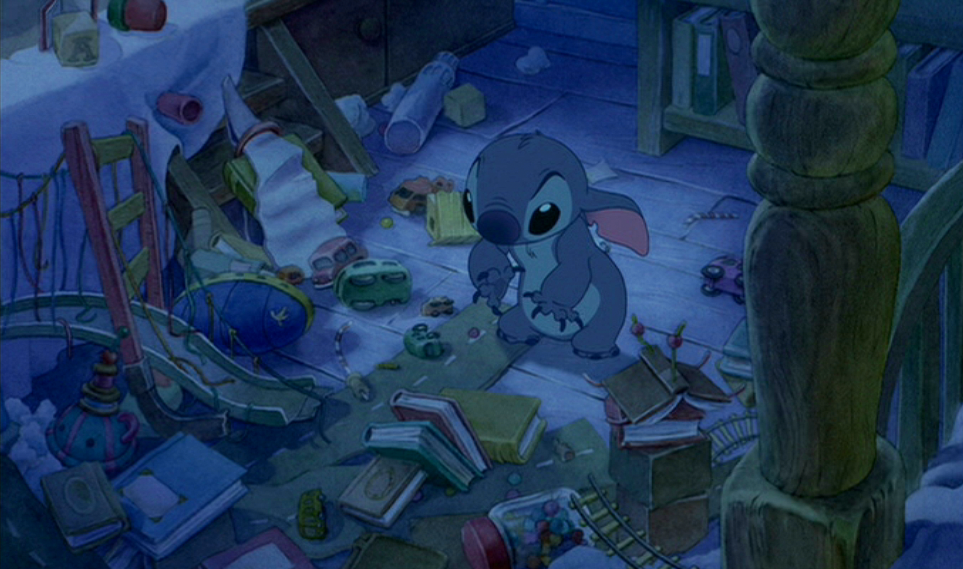

He relayed a story to me about how important working fast was during his time at Disney. He got used to painting both very precisely and very quickly, because time was always in short supply. The problem was, he painted way faster than some of the other folks working there, so he’d be done with his daily projects hours before anyone else. He still can paint very quickly, but likes going back through his work and adding even more layers. It’s why his originals, regardless of the style in which he paints them, have such visual depth.
William Silvers has clocked time at nearly every film studio, on some of the most beloved properties, including Star Wars. He worked for Industrial Light and Magic, a division of LucasFilm, in 2004. In Revenge of the Sith, if you watch the scene where (spoiler alert!) Anakin strikes down the young padawans, you’ll see some of his gorgeous work.
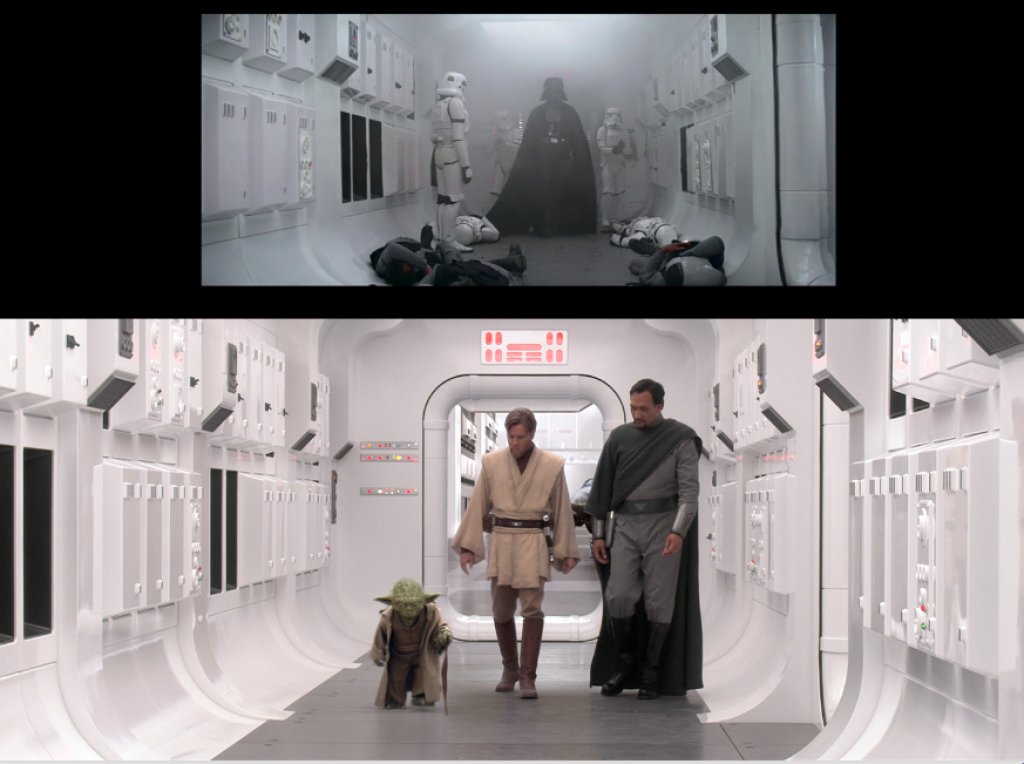
He relayed the story to me of one day when he was working on that scene. No one who goes into the studio is able to bring in anything, including cell phones or computers, lest they leak important plot points or images. Everyone signs a non-disclosure contract. During a break, he was checking in with his wife Ewa, and told her he couldn’t tell her anything about what he was doing, but to remember that day. When the film came out, he showed her that scene, and told her he knew that day he had worked on the darkest storyline he’d ever be part of. He says he still feels that way, all these years later.

In addition to Star Wars and multiple films at Disney, he also lended his artistry to the backgrounds in The Day After Tomorrow, as well as DreamWorks films How To Train Your Dragon 2, (where he created backgrounds for the scene where they discover the secret home of the dragons, among many other scenes), Mr Peabody & Sherman, The Croods, Rise of the Guardians, Puss in Boots, and the Kung Fu Panda franchise. He also worked with Warner Bros, and Sony on a number of films.
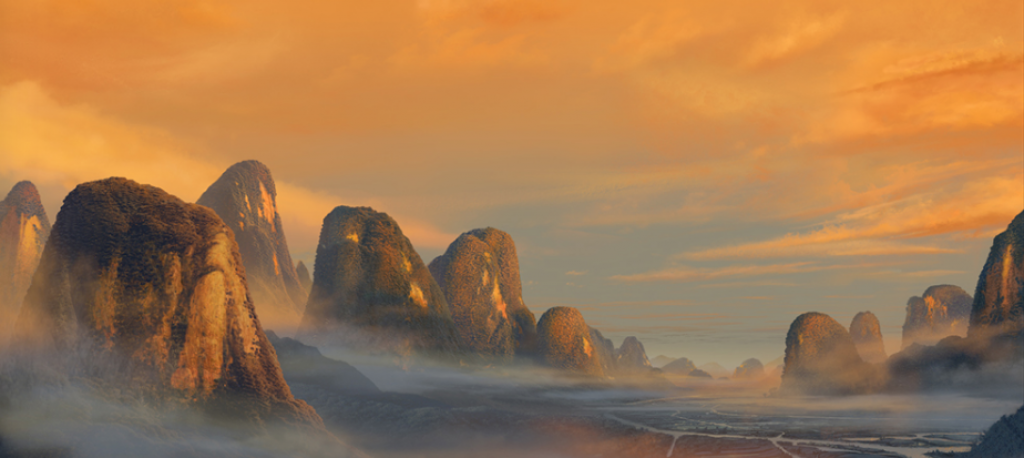
All these projects brought him to the attention of Universal, who hired him as senior designer, and he has since been involved in the design of their theme parks worldwide. If you’ve ever ridden Skull Island: Reign of Kong and enjoyed it, you have him, in part, to thank!
Some years into his career at Disney, he started working creating Disney Fine Art with several of the official companies, ultimately landing in the enviable position of dealing directly with Disney at the theme parks. He always has the support and help of his wife Ewa, who, to be honest, is the perfect partner and compliment for Bill, with her personality traits of gentle kindness and sensitivity, as well as her listening skills. She is always in attendance when he is featured at the artist special events throughout the year. You can meet him in person during one of these events and see his smile and experience his laid back attitude in person the next time your visit to Disney World coincides with an art event there.
Here are some great limited editions available through ArtInsights, that you can find by going HERE.
We at ArtInsights are blessed to not only be friends with Bill and Ewa, but also represent his art at the gallery, with images of his artists proofs from before he worked with the parks. From Lilo and Stitch to Disney Princesses to some great images from the Star Wars saga, we’ve got exclusive images that come directly from Bill, and what’s more, you can access both art designed much like the backgrounds he created during his stint there, as well as art created in a more fluid, subjective style that he also loves to do. You can only get these images through ArtInsights! From time to time, we also have access to original art, so keep checking back to see what goodies we’ve gotten from our very artistic, joyful, and inspired pal.
Bill knows he is incredibly lucky to do what he loves for a living. He attributes his success to his background. The trick is to keep going, and do what only you can do. He reasons, “What I realize now is my small-town upbringing and limited resources, as well as my heritage, has preserved in me a personal code and standards. These are the things I live by every day and teach my children; to retain your individuality, to work hard with dedication, to follow your dreams, but stay grounded.”
What I love most about Bill is his sense of optimism and inclusivity. He believes every time we help each other win, we all win. When it comes to art, being the very best isn’t as important as doing your best, and finding joy in that journey of always working to be better. Says Bill, “There will always be someone with skills greater than your own. I’m not looking to follow others or pull them down. I don’t compete with anyone but myself and I’m myself am my most harsh critic! I don’t create art just to make money. Throughout my career, I’ve been blessed by amazing opportunities to work for the best studios in the filming, gaming and theme park industry. I’ve work among some of the most influential and creative individuals. I’ve been truly blessed, and that’s my greatest reward! I guess I’m the proof that ‘all our dreams can come true if we have the courage to pursue them’, even if you are just a small-town kid. “
We asked William Silvers a few questions about his life and career:
What is your favorite movie you worked on and why?
Mulan was a perfect film to kickstart to my film career. I was able to start on the film in the early stages of development, taking me through the entire process of preproduction all the way to post. The experiences and knowledge about the film industry I gained was invaluable. Mulan will always have a special place in my heart.
What is one of your best memories in terms of learning experiences as part of your career?
Although the Disney backgrounds were traditionally created in Acrylics, the directors for Lilo And Stitch decided to use the watercolor technique abandoned since the 40s. This made Lilo And Stitch one of the most challenging and fun films to work on over the years. As a training exercise, the background artist would take trips to paint in watercolors throughout the Disney parks. We also studied the film classics, like Snow White and Pinocchio.
Can you describe your process in creating art for film?
As background artist, we were responsible for the mood and color of the films, we created the entire environment the animated characters lived in. Theatrical staging was a key feature of the backgrounds painted for Disney films. Similar to backdrops on Broadway, the backgrounds were painted to enhance the main characters and not distract or overpower them by attracting too much attention. Although Mulan was a stylized film, we looked to Bambi for inspiration on staging and painting style.
You have two distinct styles. What about each of them feeds you as an artist?
I have a natural tendency to paint in a very detailed way, so I love to challenge myself to be as loose and impressionistic as I can. I believe this is good exercise to help me be more creative in the painting process.
List your 5 favorite movies:
Pinocchio, Snow White, Bambi, Mulan, Lilo and Stitch and Star Wars.
You listen to music when you paint, yes? How do you decide what you’ll play, and what are some of your favorite pieces or songs to listen to when working?
Music to me is very important when I am painting. During the block-in stage, I listen to hard rock. I have a tendency to lose myself while I’m painting, as my concentration is focused on the painting. The block-in stage can be intimidating, so the music helps to keep me focused. After the block-in stage is finished, the detail work is done with softer, more meditative music, more Andrea Bocelli and less Guns and Roses!
What do you find is consistently the thing that brings you most inspiration as an artist?
There is truly nothing more exciting then challenging yourself and broadening your creativity with some of the best artists in the film industry. Disney Feature Animation was at the height of popularity during the Mulan years, and all the artists were treated accordingly. It was during a visit from John Lassiter to the Disney Animation Studio that I realized the wave would not last forever. John brought with him the first finished sequence to Toy Story to screen for the studio. I was blown away by what I’d seen, and immediately bought a computer and started preparing for the inevitable shift from 2D to 3D animation. I found out I love working on a computer as much as I do in the traditional way, with paints in my hand.
If you weren’t an artist, what would you be doing for a living?
I have always loved architecture. If I wasn’t an artist, I most certainly would have been an architect.
What is one sentence that reflects your philosophy of life or the best advice for living?
Life is short! Focus it on doing what you love and what will make you happy!
We did an interview in person with Bill some years ago, where he talks in-depth about his career and his art styles. Check it out!






